Going grain free! Let’s take a look at what is a grain, what isn’t and where they hide!
Well, guys, I’ve done it.
I’ve completely emptied my cupboard of EVERYTHING grain.
And I do mean EVERYTHING.
Well, ok… I’ll be honest.
I made one small, one tiny little exception.
I kept my baking powder. Until I can fin a way to sub this, it HAS to stay. Besides, I don’t think that the infinitesimal quantity that ends up in a serving of whatever it’s being used in can really qualify as being “grain presence”. I certainly cannot see it affecting my body. And I don’t think that I’ll ever get the urge to binge on baking powder… 😉
But everything else went… even my precious Miso had to go!
And my Shredded Wheat, of course…
Oh, my beloved cereal! Notice how it jumps out in every picture? I just LOVE my Shredded Wheat. Oh, how I shall miss it!
My comforting rolled oats, my beautiful, so pretty, so tiny amaranth…
All my pasta, my wild rice…
Hey, I even found an old bad of Egg Noodles. That must have been there for quite a while… I’m sure not gonna miss that one.
Also found a brand new bag of Forbidden Rice, which I had completely forgotten about and didn’t even get to try…
Oh well… it’s not like I’m going off grains forever, now, is it?
Still, I came that close to crying. I swear. It was a sad moment for your Grain Addicted Healthy Foodie.
Somehow, I get the feeling that this is more than a “see you later grains” challenge. This is the beginning of yet another profound change in my life. I mean, it’s not even been a week and I already see and feel an incredible difference, a major change in my body.
I feel so much lighter. So much tighter. So much better.
Now I can’t say that my energy level has increased yet. In fact, I think I might even say that it dropped some. My workout on Saturday has been particularly tough. Had a hard time carrying it through. Still… I made it!
But really, I feel grrrrrrrreat. And you know what? So far, I don’t miss my grains AT ALL! In fact, I hardly feel as though Lent has even begun. It’s only just starting, though, so this may very well change in a few days… or weeks!
We’ll see, I guess!
So anyway, I’m not saying that I will be giving up grains for good, but I’m certainly hoping to cut down quite a bit, permanently.
Yikes, I can’t believe I just said that. All of a sudden, I feel scared.
But hey, I need to take this one day at a time.
Now tonight, instead of giving you a recipe, I thought I’d share the list that I’ve put together to help me get through Lent without eating grains by mistake. 😉
I got a lot of that information on Grain Free Living, which is a great site that, I sort of get the feeling, I’ll be visiting often from now on!
Alright, so let’s take a look at what constitutes a grain, what doesn’t, and places where you might find grains and least expect it.
Like soy sauce, for instance… 😉
Oh, and of course, if you have any additions and or corrections that you think should be made to this list, please let me know, by all means!
GRAINS
- Barley
- Bran
- Kamut
- Montina
- Rye
- Wheat, also known as:
- Bulgur
- Couscous
- Durum
- Farro
- Graham (flour)
- Kamut
- Seitan
- Semolina
- Spelt
- Triticale
GLUTEN FREE GRAINS (BUT STILL GRAINS!)
- Corn
- Cornflour
- Cornmeal (Polenta)
- Cornstarch
- Millet
- Oats (must be labeled as such)
- Rice
- Sorghum
- Teff
- Wild Rice
NON GRAINS
- Amaranth
- Buckwheat (Kasha)
- Chia seeds
- Flaxseed
- Sesame
- Quinoa
- Soy
- Tapioca
NON GRAIN FLOURS / STARCHES
(Of course, all the non grains listed above can also be made into flour)
- Almond
- Arrowroot
- Cassava (aka manioc or tapioca)
- Chickpea or gram flour
- Coconut flour
- Dal flour
- Fava bean
- Gram flour (chickpea)
- Lentils
- Manioc
- Mesquite flour
- Plantain flour (can get at African grocers)
- Potato Starch/Flour
- Sago
- Taro flour
- Yam (iyan) flour
GRAINS WHERE YOU MIGHT LEAST EXPECT THEM
- Alcohol made from grains (i.e. Vodka, Gin, Sake)
- Baking powder (contains cornstarch)
- Beer
- Glucose (made from wheat)
- Soy sauce / Tamari (unless it’s gluten free)
- Rice vinegar
- Mirin
- Chicken and beef broth (cans and bouillon cubes)
- Condiments, salad dressings, and sauces
- And of course, many, many prepared food items… read your labels!

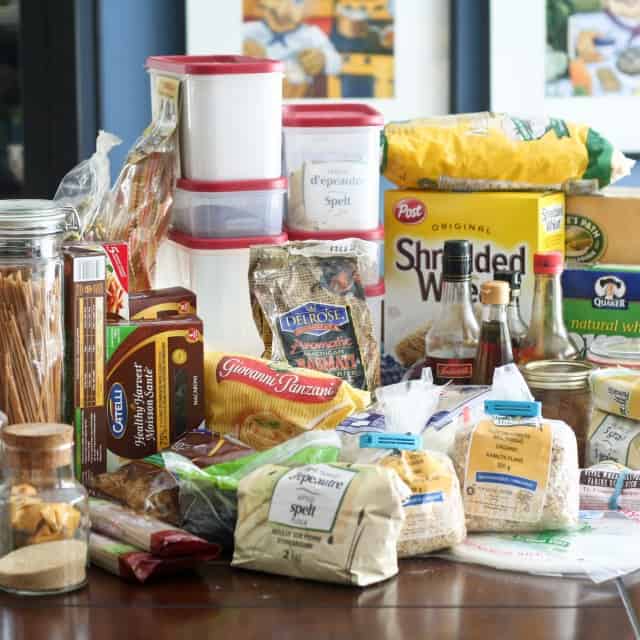
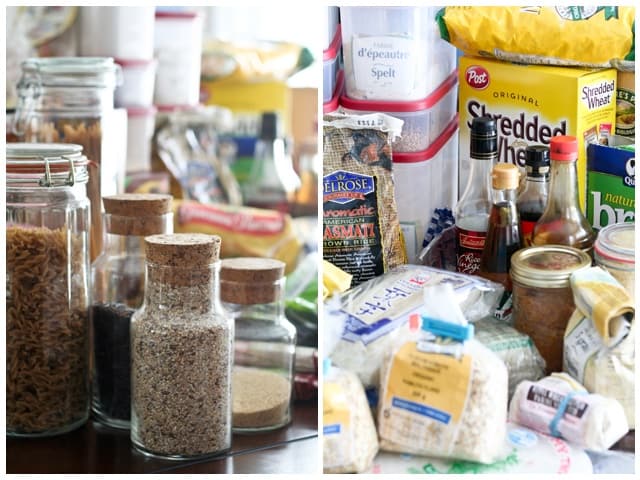
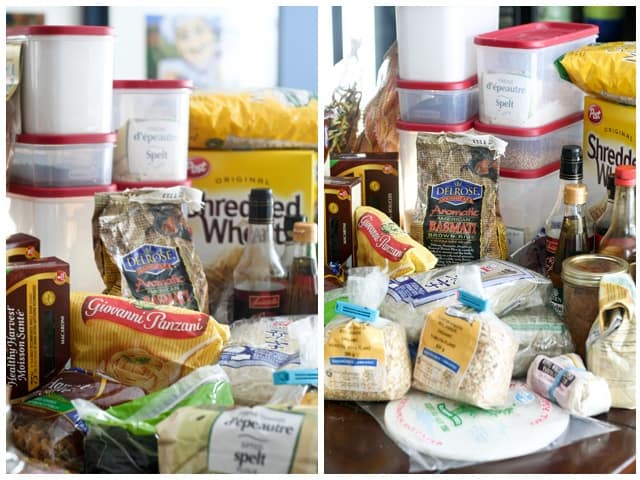


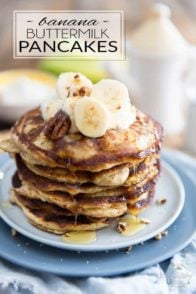

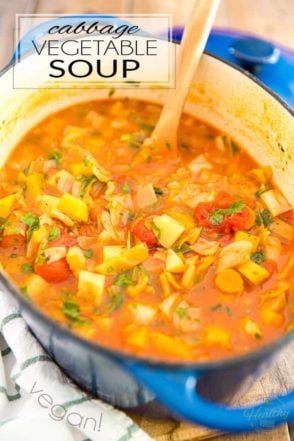
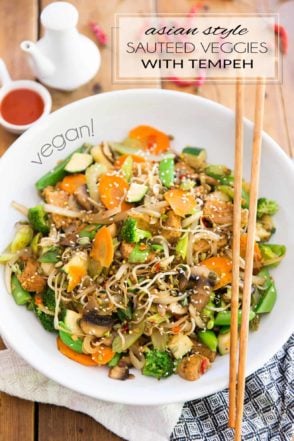
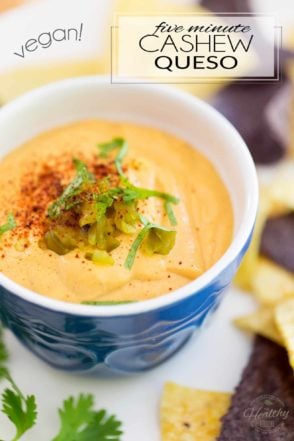
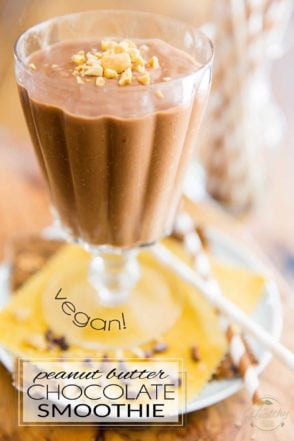
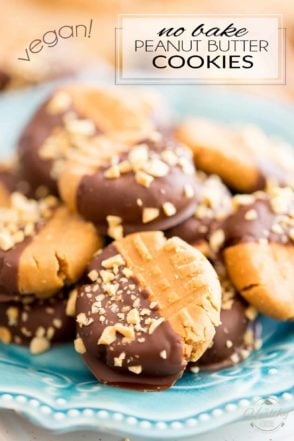
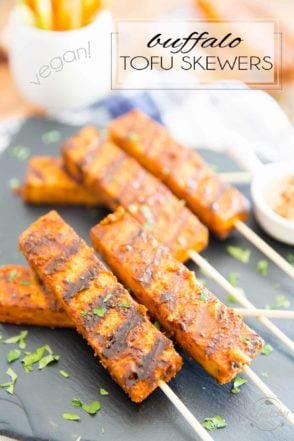



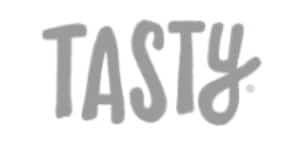


50 Comments on “Going grain free! Let’s take a look at what is a grain, what isn’t and where they hide!”
We went grain-free along with an elimination diet last summer. To substitute for baking powder, I used baking soda + cream of tartar. But you’ll probably find that once you’re grain-free you almost never need baking powder anyway. Personally I found it to be an enlightening exercise that led the way to a much healthier diet (although our previous diet was certainly better than what many people eat). I have a few recipes from that experiment on my blog – my daughter still loves the buckwheat pancakes and coconut macaroons that are free of grains and refined sugar. I still sweeten everything with dried fruit, and grains are not a daily part of our diet. The bulk of grains that we used to eat has been replaced with additional fresh produce.
Thanks a bunch for that information Rosemary! I doubt that I will ever NOT have a need for baking powder. I am a baker at heart and can’t see myself not creating cakes and breads and muffins and other baked goods. Now the challenge it for me to create them without using grains. I have to say that I find that really exciting. The toughest challenge might be to come up with a super awesome pizza dough, ‘cuz I love my pizza and could never be without it! And I’m all for using fruits, both dried and fresh, to sweeten things up! 🙂
Have a look into Breadfruit flour.
Breadfruit is also known by many different local names such as Ulu and Mei. It can be used to make Pastry, bread, pancakes, cookies, pizza dough, pasta, nachos, – you name it. It can be used without making it into a flour for very convincing crisps and cereals etc.
Breadfruit when cooked tastes similar to baked bread or potatoes. It seems ideal to make flour from breadfruit as its high in starch and can be cooked in many ways (can be baked then fried). Many find the flavour to be slightly bland (as fruit goes) which is what many people prefer when searching for alternative flour. Its full of vital nutrients and is low calorie and high carb. The fruit itself is very large and grows easily in tropical climates.
Find them in supermarkets selling Exotic or Caribbean fruits or on Amazon (the website not the rainforest :P).
I think almond flour in excess should be avoided so will be doing more experiments by substituting recipes with Breadfruit flour 🙂
Hope this helps 🙂
Yes I am from Jamaica and we use breadfruit as a staple. I have rare autoimmune neurological disorder Stiff Person Syndrome which has forced me to go back to “my roots”. I eat a lot of organic vegetables and fruits as well as plantains, cassava, pumpkins, chayote, sweet potatoes and so many other tubers. It is really not difficult going grain free as long as you are flexible and willing to try other foods. I hate to say, having lived in New York for over 25 years and has traveled extensively to other parts of the world, I do believe we in the USA have the most processed diet in the world.
I believe some people use something called “xanthan gum” t replace for baking powder. Thank you for all the info. I am new to this “healthy portion of the world” and it’s beautiful to see how more and more people are being more concious about what they eat. I am presently living in El Salvador, and people in general seem to loooooove carbohidrates and alcohol lol, so as I get to know more people like you guys here, I am glad to have international co-workers on this mission!
There is a good recipe on Pinterest on how to make pizza crust using cauliflower.
Cassava flour makes a great pizza crust!!
Hi there, I am planning to go grain free. Over the years I have made major changes to my food. I am not gluten free but need to take that extra step to eliminate grains from my food. I was wondering if I could please try the macaroon and buckwheat pancakes recipe? Thank you
As per Dr. Weil wild rice is not a grain but a seed so you can still include it in your diet during Lent. Wild rice is gluten-free but avoid boxed wild rice mixes – in addition to being less fresh, the additives can contain traces of gluten. Good luck with this challenge.
Thanks Kim! I’ll definitely have to research that about rice! Sometimes, there is a lot of conflicting information out there, it gets hard to know what’s what. I sure wouldn’t mind it if rice were indeed a seed! 😉
I was thinking the same, wild rice as far as I know is a seed.
How sweet of you to package up all those nice grains for me! I’ll just take those off of your hands for a while… 😉 Hahaha. While I’ve personally never felt the need or want to go grain free, myself, I will say that I’m not opposed to finding some nice new recipes! But, I can’t guarantee that some brown rice won’t sneak its way into a dish or two.
Ah! ah! Funny you should say that Val, because I have indeed packaged everything up neatly in bags, and I’m like wondering what to do with them now. Guess I’ll have to store that until Lent is over, but what if I choose to stay off grains after Lent? I just know that if I unpack everything and start looking at the goods, I’ll be craving grains again. Kind of like when you open up a box that you had stored in your attic and haven’t touched in years, you don’t even remember what’s in it, but then you open it and there’s no way in hell you could get rid of ANY of the things that are in that box, you know… all of a sudden, you just NEED all that stuff!
Anyway… we’ll see how it goes. Worst case scenario, I’ll just give it all to my mom and have her return my containers… 😉
And I too, can guarantee you that some grains will always sneak their way through some of my recipes… AFTER Lent is over, that is! 😉
I honestly had no idea there was cornstarch in baking powder. Jeeeeeeez. That’s honestly what I hate about how food is nowadays. It doesn’t seem possible to find any “processed” foods that aren’t contaminated with a ton of other things. It seems impossible to find just real simple food! All the more reason to make most things from scratch, at least in my mind. But I totally agree, the amount of cornstarch in a tiny bit of baking powder isn’t too big of a deal. I’m glad you’re feeling great so far! I’m so looking forward to seeing some interesting new recipes and ideas 🙂
Me neither!!! I never really felt the need to look at the label before to find out what’s in it. The good news is, I found out you can make your own baking powder by using 1 part baking soda to 2 parts cream of tartar and 2 parts non-grain starch, such as tapioca or potato, or arrowroot. I will definitely do that! Hey, I’m doing this all the way! 😉 And I can guarantee you that I’ve got some pretty interesting recipes on the way. Already started experimenting and I am pretty excited about the results so far! 😀
Grain-free pizza bases can be made from:
* shredded vegetables (zucchini or potatoes for instance)
* socca (chickpea-flour flatbread)
* thinly-sliced vegetables, layered in a pan and baked into a large ‘pancake’ – such as eggplant, potatoes, summer squash
* the same types of mixtures that are used to make vegan loaf/burger type recipes – usually a blend of legumes, nuts, and a grain – sub flax meal, quinoa, or chickpea flour for the grain
* non-grain flours or meals (flax, buckwheat, quiinoa, etc. Arrowroot or tapioca can be used to lighten the texture, but a lot of the health benefit of going grain-free is having a lower glycemic index diet and these starchy flours are high-GI)
I used to be a baker at heart, too. But now I find that I prefer simpler foods. Why make banana bread, for instance, when I can have sliced banana, sprinkled with walnuts and cinnamon?
Thanks Rosemary, these are awesome suggestions! I think I’ll have to stick with the starchy non-grain route for now, though. My brain has yet to make the switch and adapt to the possibility of a pizza crust being “non-bready”… 😉 I still can’t be without that comforting feeling of biting into a piece of cake, or bread, or muffin… there’s just something about the texture that I love so much!
I might get over it someday, though… who knows? 😉
I did not find the starch to be necessary in the baking powder substitute.
Oh, good to know. I’ll probably leave it out completely, then… Thanks for the tip! 🙂
Deliciously Organic says that you can make your own baking powder with:
1 part baking soda + 1 part cream of tartar + 2 parts arrowroot
And soy sauce?! That’s crazy. I won’t give that up. Thanks for the list! It’ll make things easier. 🙂
Yeah! I did find that! Phew, that’s quite the life saver. I’ve already got all that I need in my pantry now, as well as GLUTEN FREE TAMARI SAUCE!!! Now I feel better! 😀
Hey! A great Tamari/soy sauce substitute are coconut aminos – it’s fermented coconut sugar – and it’s fabulous! 🙂
Why did you have to get rid of miso? You mean Japanese fermented soy beans, right? Does it contain grains? I thought it was just soybean!
I thought so too! But you see, miso is also made from a variety of grains, namely wheat, rice and barley, to name a few! I know that grain free miso also exists, I will DEFINITELY have to try and find some. Going to my favorite Asian grocery store this coming Friday, I will definitely look for it there! And while I’m at it, I’ll try and get my hands on “buckwheat only” soba noodles.
Now… if only I knew how to read the word wheat in Japanese, that would most definitely help! 😉
What about chocolate? I’ve googled it to death but can’t find a definite answer. Is it grain free but you don’t use it because it has added refined sugar? I made some delicious grain free chocolate cookies today but they’re lacking chocolate chips!
Oh, chocolate definitely isn’t a grain! I’m not using it during Lent because of the added sugar, you are right. And in general, I treat it as, well… a treat! Chocolate IS good for you, but still, it’s not something that you want to have LOTS of every day. I will indulge in a few squares of 70% cocoa and over, about once a week. What is truly healthy in chocolate is in fact the cocoa, and THAT, I consume a heck of a lot of! I think I must be having at least a tablespoon of cocoa every single day of my life. Or almost…
If you’re gonna use chocolate chips, look for the darkest you can find, ideally over 70% cocoa! Ever tried cacao nibs? I find they are a great replacement!
Aha. Good to know! I dislike (big surprise, I know) dark chocolate and so I normally use 55%. A tablespoon of cocoa every day? Wow! That’s impressive. Although with all the chocolate avocado pudding I’ve been eating I guess I eat a lot too. I don’t think I’ve ever seen cacao nibs but I’ll take a look! Thanks for the suggestion.
I was gonna say you definitely have to look for cacao nibs, but if you dislike dark chocolate, I’m not sure that you will like them. They are pretty bitter in taste, but they are extremely cool to eat. They almost feel cold in your mouth, and despite being crunchy, they also feel creamy. I am totally addicted to them, can you tell? I love my chocolate very dark and barely use any sugar at all anymore. In fact, I will regularly enjoy hot cocoas that I make with nothing more than milk and cocoa powder (lots of it) to which I add a little bit of cinnamon and cayenne pepper… YUMMERS! That’s my feel good, super comforting drink right there!
hi. I just don’t get it
can u explain what is the disadvantages of all those grains
TQ
Many people do not have enzymes necessary to digest grains or gluten or both.
If you do not have the enzyme, the undigested material can not be processed out of the body. As with other toxins, the body will deposit it in fat cells. Most of this fat accumulates around the waist.
After 20 years of trying, I finally achieved “GRAIN and GLUTEN free.” My body dropped 45 pounds. I lost my love handles that I had since age 11. I have the same figure I had at 16.
I am over 70 and I can not even express how this improved my life – energy, stamina, and on and on. I found a great deal of information in a book called by Shepard, “Celiac Disease, the first year” or something close to that.
I don’t test positive for celiacs, but after years of experimentation, I absolutely determined that all grains caused bad effects within the next 1 to 4 days. I found it at the library.
Check wiki and Mayo Clinic Library for additional data. They describe celiac and its effects differently, especially the “intestine no longer functioning will be fatal, ie: celiac disease.”
I have spent about 50 years looking for an answer. No gluten, no grain is a huge part of it finding health.
I am looking for an on-line PhD program in Nutrition. I have a masters degree.
Be WELL !
Like you, I am over 60 and have surely been struggling with symptoms for years. About 5 years ago my body began to refuse the food I tried to eat— by choking! I had no choice but to rethink my diet. At first I thought gluten-free, but then realized the problem was more profound than that Each day, or second day, Something would make me ill. Miso? Who knew? Chicken broth? If I mistakenly ingest grain, it is poison to me. So, for me, this is not a challenge but a necessity.
Have you switched to Paleo, Nina? And chicken broth, really? Chicken broth made you sick?
Well, yes, the bouillon cubes (I should have guessed that), and apparently some tinned broths have ingredients other than meat and water. The point is…. even though I was on the right track, I was getting ‘hit’ by hidden ingredients.
Oh yeah, those pesky hidden ingredients. That’s why I now make pretty much everything from scratch at home. 😉
wild rice is a seed not a grain.
it is a grass seed.
Why did you have to say goodbye to amaranth when then you’ve gone and put it in your non-grain list???
You might have a point, guess I’d have to revise that, but I have since said goodbye to everything that is on all the lists, grain and seeds alike, so it’s not all that relevant anymore…
I was just curious. I thought it might be confusing to people who google for information on being grain free 🙂
I went grain free and within a week or two I went from ADD and intense brain fog to Limitless.
You may want to update your info. Wild rice is absolutely not a grain but an aquatic grass..
Wild rice is an aquatic grass…not a grain! Please, correct your content . I am a certified nutritionist and am upset to see that your information is inaccurate, especially when people who need to be grain-free are depending on your advice.
Well, according to the USDA, rice is a grain. I think I’ll listen to them instead… In fact, wheat is a seed/berry that comes off of a grass too. As far as nutritionists are concerned, they’re “certifiable” all right.
That’s why the overweight/fat hypertensive nutritionists that I know keep telling diabetics to just eat less of the poison (carbs), but just to do it 6 times a day. God forbid they tell them to eat a ketogenic diet and actually get their blood sugars under control. Just eat more of the poison (just not a lot at one time), and then take more insulin / metformin to fix that problem….
BTW, I’ve been eating a ketogenic diet for 3 years, and I recently had a CAC (Coronary Artery Calcium) scan done a few months back (the “gold standard” when looking for heart disease). I scored a big fat ZERO on it, which is the absolute best score possible. I guess all that saturated fat I’ve been eating DIDN’T clog up my arteries after all… In fact, it cleared it up, because 3 years ago I was 100 pounds overweight, diabetic, had severe edema in my legs, and was having frequent chest pains (sounds a lot like CVD to me). That’s what I got for listening to a certified nutritionist….
I trust certified nutritionists about as far as I can throw their fat asses…. The ADA (American Dietetic Association) has them on a very short information leash. They can only be “certified” if they attended a college that is certified by the ADA. Who sponsors the ADA? Kellogg’s, Nabisco, Monsanto, Nestle, etc, etc…. Every dammed one of them are purveyors of carbs. Certified nutritionist, trained seal, same difference…. I don’t want to hear either one of them barking for their masters.
I know it’s a bit of an old post, but since people clearly still have access to it, I just wanted to point out that if anyone here is going grain free, but you have amaranth or quinoa laying around, you can sprout it! They both are also edible as leaves, so you can even grow them until the leaves pop, the way you would with alfalfa sprouts, by which you will get rid of the hull and grain-ish (neither are grains, but I get the point, anti-nutrients, saponins, etc) part of them entirely.
What about Organics. I am sitting here eating a bowl of organic brown rice seasoned with Organic Lemon chicken with Kayanne Pepper and I always thought rice was a seed. <3
Confusing, I know…
According to Wikipedia “Grains are small, hard, dry seeds, with or without attached hulls or fruit layers”. So all grains are also seeds. That doesn’t really help at all now, does it?
But then, I found this brilliant explanation on the Internet that totally clarifies things up: All grains are seeds, but not all seeds are grain. There are a whole bunch of scientific terms/etc that explain the difference but there’s an easy way to do it. If you have to peel it or shuck it to get to the good part, it’s a seed. (peanut, pea, sunflower seed, etc). If you can grind it up as is, or remove only a small husk or chaff, it’s a grain (rice, wheat, oats, etc).
Hope this helps!
Hi Sonia,
Great information! I’m not celiac but allergic to wheat. Additionally, my body cannot metabolize fructose (or I lack the enzymes to do so) so therefore am sugar intolerant for the most part (except with glucose/sucrose). So I’ve cut out grains, fructose (except for low FODMAP fruits – only 3 per day), soy, and dairy (except for certain low FODMAP cheeses and organic eggs). My diet incorporates a low FODMAP diet and anyone who seeks to lower their GI or sugar intake should factor this in (in my opinion). It was first introduced to me at a hospital as a medical diet. Arrowroot, tapioca and some of the other starches for thickening (acacia gum, guar gum, etc.) are perfectly acceptable in small doses. However, almond, coconut and amaranth flours are extremely high FODMAP products so making cakes, pies, pizza dough, breads, cookies and muffins should be watched closely with these flours. Only a small serving (like 1/4 cup or 1/2 cup) is considered low FODMAP. And there you go having people like Dr. Amy Meyers expound the example of baking with Cassava flour in large quantities as a Naturopathic expert online. Some people go crazy because these flours are considered “non-grain”, so they think they can eat in large quantities and still lose weight. But they are high in FODMAPs so you won’t lose fat because you’ll never get to ketosis! So I’ve developed my own grain-free diet which represents low FODMAP, Autoimmune and Paleo all combined into one, with the ultimate goal of ketosis in mind. Dr. Mercola’s book “Fat for Fuel” is an excellent start (premiered May 2017, NY Times best seller) as are other seminars online such as Dr. David Jockers “Keto Summit” for free. Losing fat is not easy but thinking that we can substitute flours with high fat nuts and seeds in abundant quantities won’t cut it either. Everything has a limit. So the low FODMAP foods have to be factored in along with the recommended quantities. I carry the app on my phone when I shop. Since it allows brown and white rice, I just eliminate those except for occasional use. Just make your own decisions with regard to these foods. Nobody runs your life. Brown rice is a good solid food (with thiamine, welcomed for people with thyroid issues) and I have it occasionally (1/2 cup) with a stir fry as a prebiotic because many of the prebiotics are high FODMAP. But I can’t eat grains on a constant basis and have eliminated corn and oats as mentioned, just the occasional wild rice or brown rice addition, or a small half of a white potato (low FODMAP). Red and yellow potatoes are high. I’ve tested FODMAP and it is so powerful. If you cheat on FODMAP, you’ll have a tummy ache and feel absolutely awful and get constipated while you’re healing your microbiome. So I have about 10 cookbooks on FODMAP and I incorporate low FODMAP cooking into my basic diet of recipes for dietary control and success. Again, this is strictly for SIBO and intestional issues that might be contributing to autoimmune disorders. But chances are that if you are grain intolerant, you probably have some kind of digestive or autoimmune predisposition as well. Also don’t forget to eliminate “nightshade” foods for awhile or cook them in a pressure cooker for that occasional chili or meal (eggplant parmesan, etc.) so that your stomach can get a rest (Dr. Steven Gundry). I also eat organic (only) and what a difference!!
What are you taking about ? Losing fat is easy. This is not an exception. This is the rule. That’s why fat consumption and fat production is the preferred method in wildlife.
If you eat foods that promote fat, then you will not lose fat. If your goal is to lose fat, but you’re eating fat promoting foods, then you’ll need to revise your diet.
Diet comes from the Greek work “diaita,” which means “way of life” – so your diet shouldn’t be a fad, or something that you change when you go out to restaurants with your friends.
I select where I’m willing to eat depending on what they have available on their menu. If they don’t have it, then I don’t go.
So, if you want to lose the fat quickly, lose the grain and increase the grass-fed, antibiotic-free, hormone-free beef and the wild-caught fish. The less cooked, the better.
Also, if you take antibiotics and medications, you’re definitely making yourself fatter that way too, as well as weakening your immunity.
Hi.
Thank you for this wonderful page. My son has to switch to a no grain diet and I’m ran into your page.
It’s very interesting and informative. Also I noticed that you still left your baking powder lol. I found a way how to make your own baking powder at home with the following ingredients: citric acid, cream of tartar and baking soda.
I hope I could help you with that and wish you all the best.
May God bless you.
Anita
* sorry I forgot to mention there is one more ingredient. It’s potato starch
Thank you